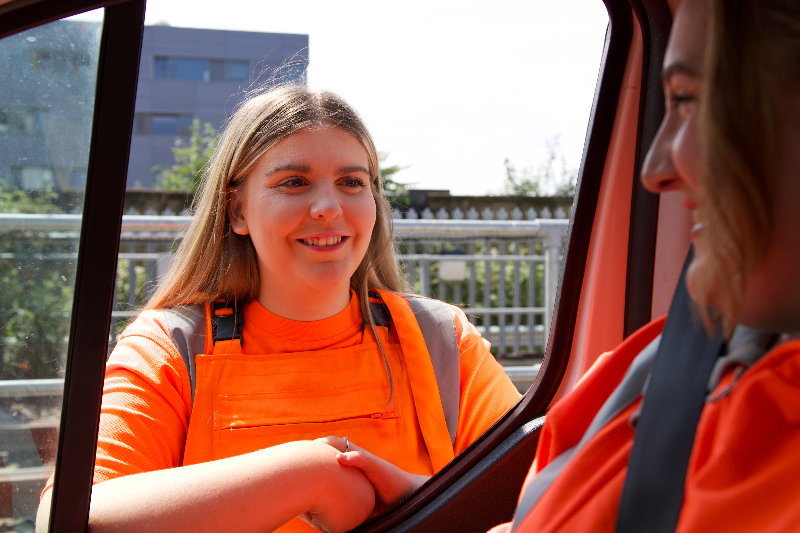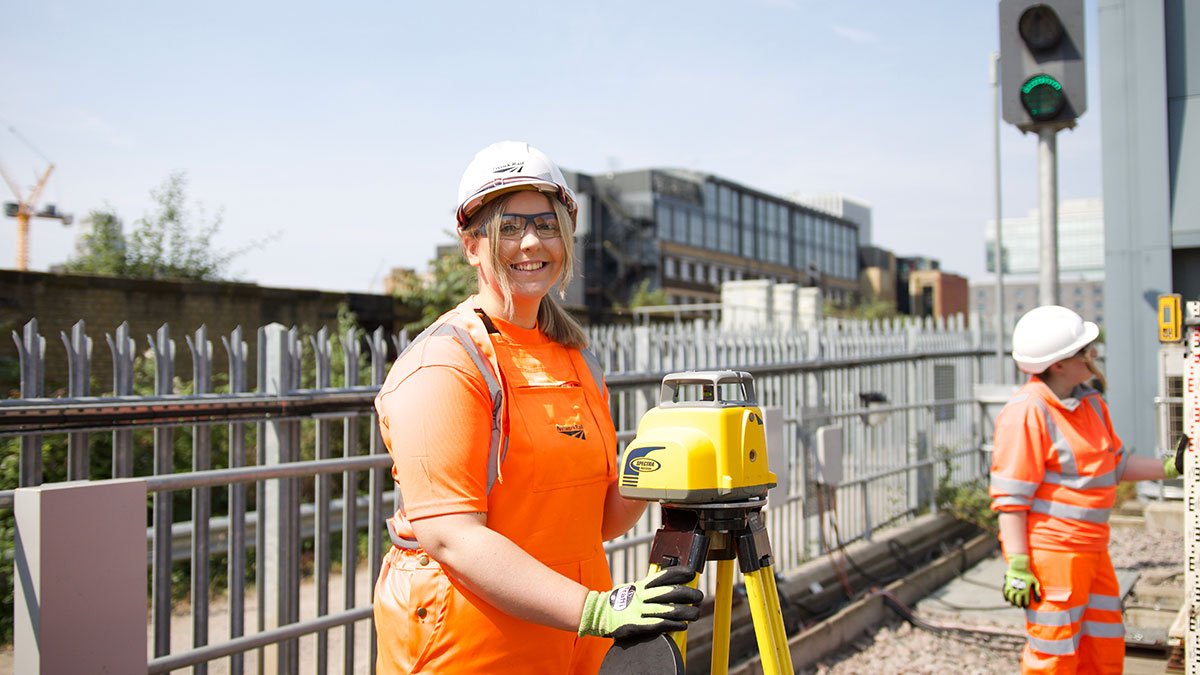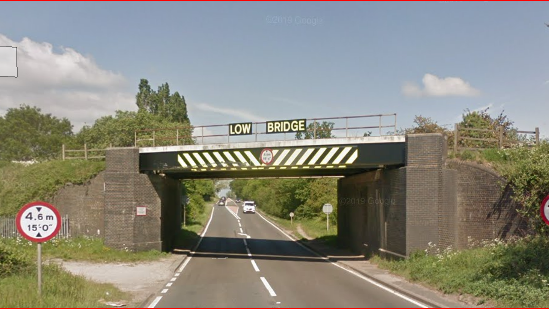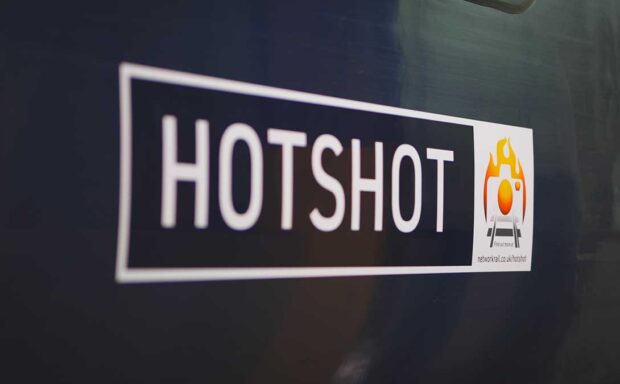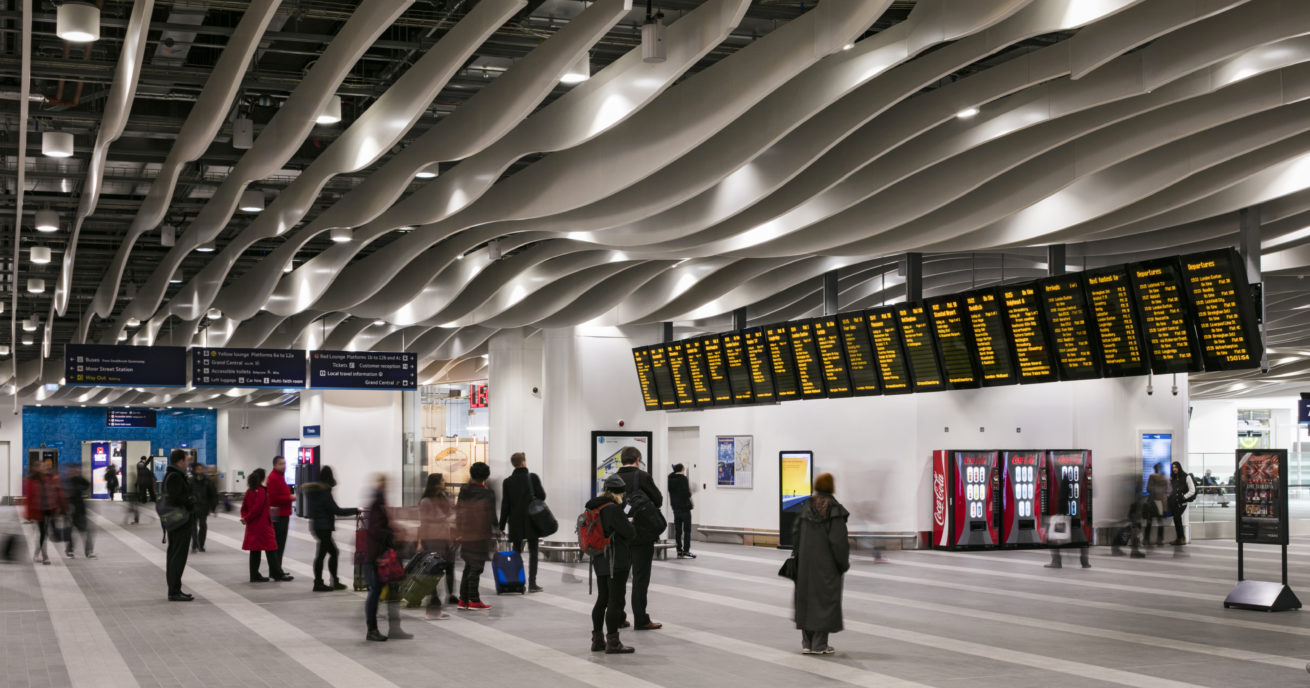Jordanna Mills works in maintenance on the railway and is one of the many women working at Network Rail contributing to an inclusive organisation.
Read on to discover what Jordanna does and why she recommends it to just about everyone.
Tell us a bit about yourself.
I’m just a regular girl from Ashford in Kent and I work out of Tonbridge. I’m 22 years old. I enjoy dancing, Formula One racing and spending time with my family.
What’s your job and what does it involve?
I’m a senior technical officer in the maintenance and infrastructure team at Network Rail. My team primarily investigates any faults on the railway that need fixing.
The faults can be reported from a variety of sources such as a driver who’s experienced a rough ride on a part of the track.
Once a fault is reported, it’s up to my team to survey, design and implement a repair scheme using either a tamper or stone blower machine.
We play a vital role in making sure the railway remains safe, reliable and efficient for everyone.
What was your first job at Network Rail?
I joined Network Rail on a Level 3 Engineering Apprenticeship straight after finishing my sixth form education. I was interested in the opportunity to earn while learning, alongside the varied career paths the scheme could lead to. I also liked that Network Rail offered a secure career with many benefits.
During my apprenticeship, I worked with various teams and departments. A role within the technical team was particularly appealing due to the balance of theory and practical elements it provided.
What do you like the most about your job?
I absolutely love the maintenance side of my job as I’m fully involved in improving our track conditions at each stage.
I also enjoy the variety of the job. I work closely with the teams out on track maintaining the railway, and with various engineers solving larger problems. It gives me the tools and experience I need to progress my career.
I mostly work at night. This allows me to get out on the track and works well for me and my family. I do work some days to process information and the data collected out on the track.
As I only work a certain number of weekends a year, usually with plenty of notice, it’s very easily manageable.
This gives me flexibility to maintain my work/life balance, which I absolutely love.
Network Rail is one The Times Top 50 Employers for Women.
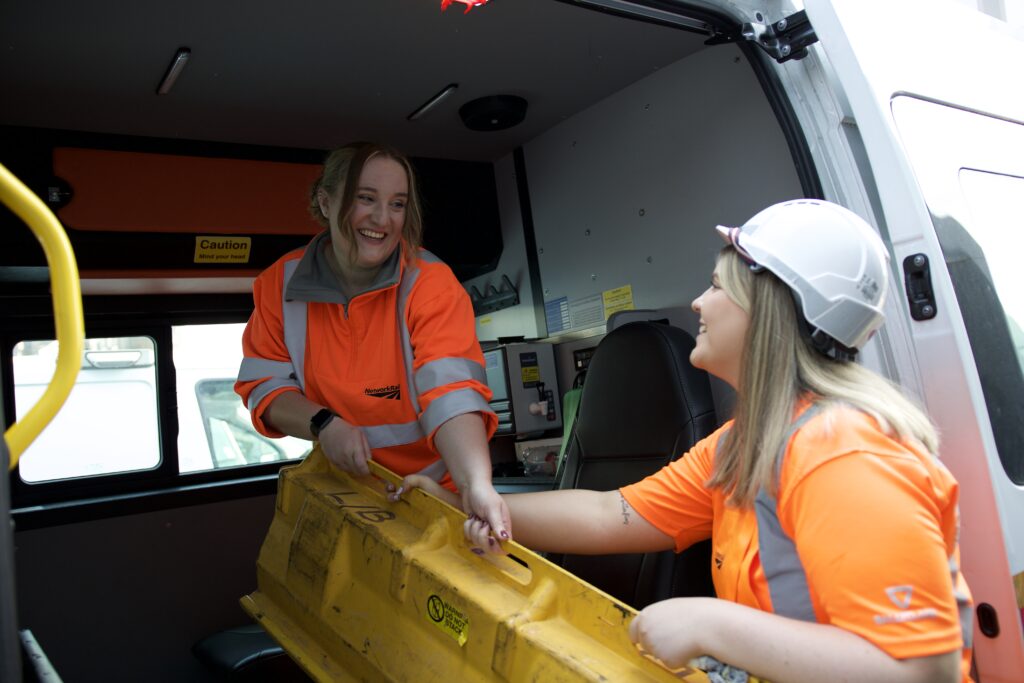
Can you tell me a little bit about your role day to day?
I’m also responsible for checking that structures like our bridges and platforms are safe and clear so that trains do not strike them. This involves actually going out and surveying each item.
Alongside this, I make sure the track can withstand hot and cold weather. For example, whenever there is disturbance to the ballast from engineering work, I have to calculate a critical rail temperature. I then create mitigation plans so we know what to do when the rail gets too hot or cold.
A lot of my job involves going out on the track doing things like carrying out inspections to monitor the wear of the rail and estimate its lifespan before it needs changing.
This all sounds really hard and complicated, and I’m not saying it’s not – but I’ve been given training to carry out the work. And it is so rewarding.
What was the best thing about your training at Network Rail?
It has to be the variety of skills I learnt alongside the actual training.
As well as mandatory technical and non-technical training, which allows me to perform my job to the correct competency level and safely, I also got to develop soft skills like leadership, management, public speaking etc.
These broader skills are ones I can use time and time again throughout my career in a range of roles.
I also found that all training has been highly applicable to my job. All the courses were extremely beneficial and I always came away having learnt something new.
What piece of advice would you give to anyone interested in a role like yours?
Be prepared to work collaboratively. You will find yourself communicating with various teams and departments that work together to maintain the railway.
And be ready to work within time constraints. Because many faults have associated timescales for when they need to be fixed by, work is often planned and done at the last minute.
What’s been a career highlight for you so far?
For me, it was completing my Level 3 Engineering Apprenticeship and being accepted on the L6 BEng (Hons) Rail and Rail Systems Engineering Apprenticeship starting this September at London South Bank University.
Where do you see yourself in the next few years?
At the moment, I would like to work my way up through maintenance. That might be to become a principal technical officer, an assistant track maintenance engineer, or even a track maintenance engineer.
I’m also open to possibly moving into the projects and design side of things at some point.
There are so many pathways that I’m not sure yet.
Any last words of advice?
I would recommend anyone to take the plunge and apply for a role within maintenance at Network Rail. It’s the most rewarding job I’ve ever had.
I am extremely passionate about promoting women and young people in science, technology, engineering and mathematics (STEM) careers. I’m also keen to promote non-conventional routes into further education including apprenticeships. All these things weren’t talked about when I was at school.
I went to an all-girls grammar school and was pushed to apply to universities to study traditional subjects like law, medicine and business. There was little to no mention of apprenticeships.
I wish I had known about all the options when I was 16; it would have saved me from feeling lost. I don’t want young people to feel like I did – that if they don’t go straight from college or sixth form into university, they are failing.
